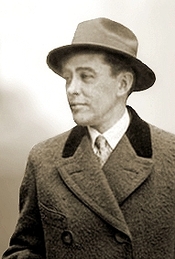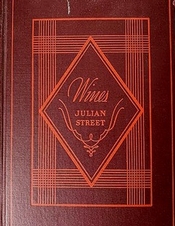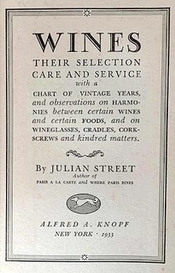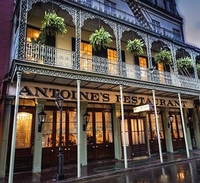
Keep in mind the state of affairs of the wine world in 1933. Prohibition had just ended and, of the 2,500 US wineries that existed prior to Prohibition, only about 100 remained in business. Grape growers had experienced robust demand during the Prohibition years, sending fruit or grape concentrates to home winemakers around the nation. Those grapes, however, were selected for the volume of production and for thick skins which allowed interstate shipment.
In 1933, the US was in the throes of the Great Depression. Unemployment stood at nearly 25%, the dust bowl years were beginning, and bread and soup lines were fixtures in many communities. For those fortunate enough to have a  job, the average wage was $1,550 per year. The average house sold for $5,500. The male life expectancy for the US in 1933 was 61 years. Franklin Delano Roosevelt became President in March and began the New Deal.
job, the average wage was $1,550 per year. The average house sold for $5,500. The male life expectancy for the US in 1933 was 61 years. Franklin Delano Roosevelt became President in March and began the New Deal.
Popular films of 1933 were King Kong, 42nd Street, She Done Him Wrong, and Duck Soup. Top songs were “Stormy Weather” by Ethel Waters, “Sophisticated Lady” by Duke Ellington and “We’re in the Money” by Dick Powell. A new Pontiac cost $585, a beef rib roast was 17 cents a pound and a loaf of bread would set you back 7 cents.
In the world at large, portents of events that would shape the next decades  were apparent. Adolf Hitler had just risen to power in Germany. Mussolini was leading Italy and Joseph Stalin was tightening his grip on power in Russia.
were apparent. Adolf Hitler had just risen to power in Germany. Mussolini was leading Italy and Joseph Stalin was tightening his grip on power in Russia.
France was the obvious leader in the world of wine. French wines were the standard of the world, even though the appellation contrôlée system had not yet been established. Julian Street’s book reflects this dominance. Of the 104 pages devoted to wine regions, Street devotes 63 pages to French wines. Compare that to the 10 pages about Germany and 7 regarding Italian wines. He devotes all of two sentences (two sentences!) to South African, South American and Australian wines – only to note that wines are produced on those continents.
Below are a few of the observations Julian Street made in his survey of wines:
“Our (United States) wine industry…..was suddenly and ruthlessly cut down by the sword of Prohibition and as but lately waked up to discover that the wound was not mortal.”
“Foreigners are wont scornfully to charge that America’s two great contributions to the world of drink are the cocktail, which ruined the manners and the palates of other nations, and the phylloxera, which….destroyed European vineyards.”
“Miserable wines from (Bordeaux) are being shipped here now….as they were shipped to England in the twelfth, thirteenth, and fourteenth centuries. Many Americans to whom wines come as a new thing will taste them and decide they don’t like Claret. But it won’t be Claret they dislike. It will just be bad wine.”
“Let come what may, the British stick to their traditions. It is hard to introduce a new taste to England, but, once introduced, it becomes a fixture.”
The demand (for great Burgundy) is ten or twenty times greater than the supply, and the strain upon the integrity of shippers has often proved too great to be withstood.”
“Some Americans who have learned about wines, or think they have…will tell you they like Burgundy, but the chances are twenty to one against their ever having tasted an authentic bottle. The amount of blending and faking and fortifying and cooking that goes on in Burgundy creates a stench that can be smelled throughout the wine-drinking world.”
“A good natural Fino is likely to be appreciated by Spaniards only; it is very light and is dry enough to curl your hair.”
“A person possessed of a vestige of taste would, for instance, know instinctively that cocoa is not a suitable beverage to serve with fish. Change your cocoa to the finest red Bordeaux or Burgundy, and still the combination is bad. Serve either of these red wines with dessert and you are wrong again. Drink them for refreshment on a sweltering summer day and you will get neither refreshment nor the fine, full smack of the wine.”
“Bottles labeled ‘Napoleon’ Brandy are a mere absurdity, designated to rook the innocent….‘Napoleon’ Brandy is in the class with Sparkling Burgundy. May the devil take both, and the people who put them out.”
Some discoveries in the text of Wines are now anachronistic. He refers to Chablis, for instance, as one of the natural sparkling wines of France. The naturally pétillant versions of Chablis could still be found around the region. In Burgundy, we find some modern Premiers Crus listed in the same quality class as modern Grands Crus. For instance, Les St. Georges and Les Cailles in Nuits-St. Georges are listed with Musigny, Chambertin, Romanée-Conti and the other modern Grands Crus in the Côte de Nuits classification. Meursault Perrières, Charmes and Goutte d’Or are all listed with Chevalier-Montrachet and Bâtard-Montrachet as top white Burgundies.
Mr. Street lists wines by alcoholic strength as well. Champagne at 12-13% is in line with today’s produce, but he lists red Bordeaux as having 9 to 11% alcohol, a far cry from today’s 14+% bottlings. White Bordeaux, both dry and sweet, are listed as 9-12% alcohol content. Clearly, Bordelais winemaking has changed over the 87 years. Côte d’Or Burgundies and Rhône wines, however, are listed at 12-14% – in keeping with today’s levels.
The list of PRINCIPAL ITALIAN WINES contains the expected Barolo and Barbaresco in Piedmont, but also includes Freisa and Grignolino. Curiously, in Tuscany, he names Chianti, Pomino, Rufina, Carmignano and others but makes no mention of Montalcino or Brunello di Montalcino. Faded stars like Stradella in Lombardy, Gragnono in Campania, and Castel Bracciano in Latium make his Well-Known Italian Wine list.

Street closes his book with a dozen or so examples of menus meant to be accompanied by wine. One restaurant menu he highlights is the long-standing Antoine’s in New Orleans. A look at a contemporary Antoine’s menu reveals that you can have a similar gustatory experience to Mr. Street’s some 87 years later.
BY ANTOINE’S RESTAURANT
NEW ORLEANS
Oysters
Boiled Filet of Pompano, Maître d’Hôtel
Potatoes Duchesse
Wine: Chablis Première, 1926
Broiled Sirloin Steak
Cauliflower au gratin
Coffee
Today, you can still sample oysters in abundance on Antoine’s menu. You can also find Pompano Pontchartrain, Steaks, Meringue Glacée and Coffee. You might easily find a 7-year-old (2013) Premier Cru Chablis, a 9-year-old Léoville-Las Cases, and a 4-year old La Tour Blanche or equivalent wines on a contemporary wine list. Some of our cherished food and wine pairings have certainly stood the test of time, and it is both interesting and satisfying to think of them as a bridge across generations.
